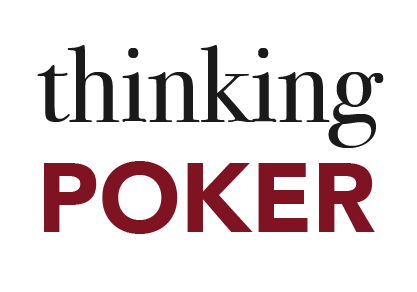 Zachary Ellwood’s Reading Poker Tells is one of the most helpful poker books I’ve read. To some extent that’s for personal reasons: as a primarily online player, I have the most room for improvement in skills like reading physical tells that apply only in the live arena.
Zachary Ellwood’s Reading Poker Tells is one of the most helpful poker books I’ve read. To some extent that’s for personal reasons: as a primarily online player, I have the most room for improvement in skills like reading physical tells that apply only in the live arena.
The book more than stands on its own merits, though. Ellwood covers his subject clearly and thoroughly, and his book is well-organized and easy for a player of any ability level to follow. The material isn’t earth-shattering, so if you already consider yourself adept at reading your opponents, you might not have a lot to gain. For relatively inexperienced live players like myself, though, there’s no better resource for learning to decipher your opponents’ behavior.
It’s clear that Ellwood knows his stuff. A former professional poker player, he draws his conclusions from his own experience at the table and from studying academic research on human psychology and emotion. One of the great strengths of his book is that he explains the psychology behind specific types of behavior and also the ways in which that psychology manifests itself in observable tells. This provides readers with both very specific and practical things to look for and a framework for interpreting other behaviors not explicitly covered in the book – Ellwood is good about acknowledging the limits of what can be learned from a book.
Reviewing a book on physical tells requires comparison to Caro’s Book of Poker Tells and Read ‘Em and Reap, two well-regarded books that have already addressed the subject. Whereas the former draws exclusively on the experience of professional poker player Mike Caro, and the latter on the academic knowledge of the decidedly non-professional player Joe Navarro, Ellwood’s book synthesizes both.
To his credit, Ellwood consistently cites Caro and explains where and why the two authors differ. His primary advantage is that he is most familiar with what actually happens in contemporary poker games. Caro’s book, originally published in 1984, is in part a victim of its success – most serious poker players have either read it or are at least familiar with its general principles – and in part simply outdated considering the sophistication of the average player these days.
Navarro’s major weakness is that, although he knows the science better than anyone, he is not a professional poker player and it shows in his examples. Although Ellwood makes the questionable decision not to address his disagreements with Navarro explicitly, the reasoning is there if you read between the lines. In particular, he argues that a bluff is not a lie, calling into question Navarro’s modus operandi of applying his experience detecting falsehoods during interrogations to the poker table.
Reading Poker Tells is also one of the best-written poker books I’ve encountered. It’s clear, well-organized, honest, and accessible to players inexperienced at reading tells. Unlike many poker authors, Ellwood doesn’t overstate the value of his material. He emphasizes that sound poker strategy comes first, and that tells mostly help with marginal decisions.
Organizationally, Ellwood discusses three major types of tells: Waiting-For-Action (things players do when it is not their turn), During-Action (how players act while betting or checking), and Post-Bet (behavior after making a bet that could be called or raised). He further divides each category into Strong and Weak, which sometimes feels redundant since weak tells are often just the inverse of strong ones. For example, the author cites willingness to make eye contact after betting as a sign of strength and later discusses unwillingness to do the same as a sign of weakness.
This generally high-quality material makes up the bulk of the book, but Ellwood includes a few other valuable tidbits. Reading Poker Tells opens with a more general discussion of tells, when and why they matter, and how to interpret them. The books closes with suggestions about how to observe tells, ways to get more reliable reads, and things you can do to encourage your opponents to give off tells.
All in all it’s a new favorite of mine and highly recommended for anyone who’s serious about playing live poker. Even, perhaps especially, if you’ve already read books on the subject, Zachary Ellwood’s Reading Poker Tells will help you make the most sense of the things your opponents do at the table.
If you found this review helpful and choose to purchase this book, please use this affiliate link to do so: Reading Poker Tells
On Episode 14 of The Thinking Poker Podcast, Nate and I discuss Reading Poker Tells on the air and interview author Zach Ellwood. Nate is more critical of the book than I am, if you want a different perspective, and in the interview Zach goes into more detail about, among other things, his opinions of the other major books about tells.

1 thought on “Book Review: Reading Poker Tells”